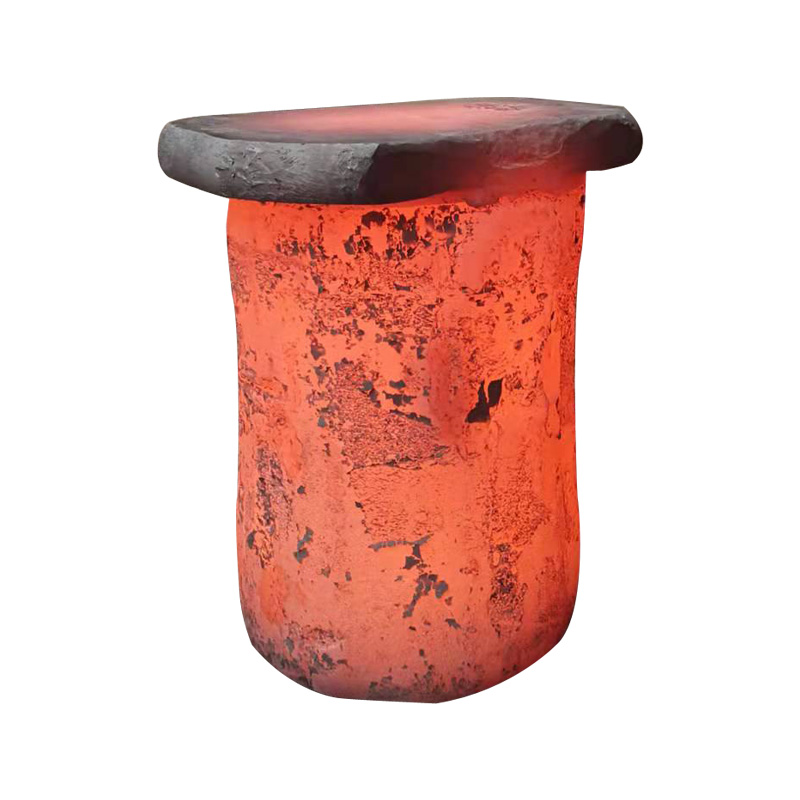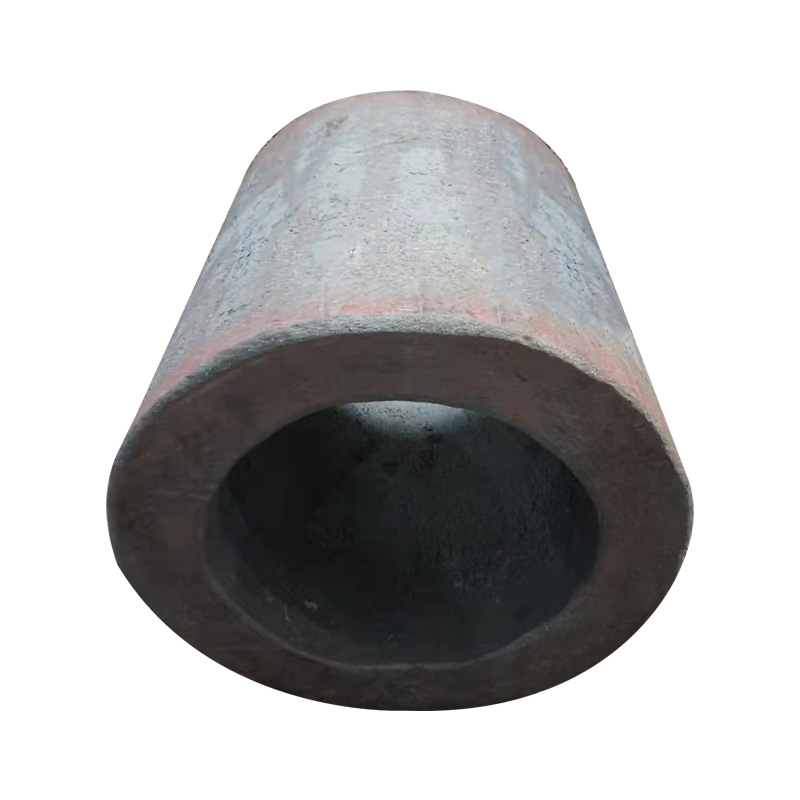Research on forging heating process specification of large forgings
2022-06-08
Large forgings are also a kind of common forgings. The following article mainly tells you about the relevant specifications of long axis large forgings forging heating process.
Large forgings are generally used for drive shafts, which are the key and core components of machine equipment and the basic parts of manufacturing major equipment. The quality requirements are very strict. The production process of large shaft forgings is heating before forging, forging and heat treatment after forging. Because the production of large forgings is mostly single-piece production, the scrap of forgings will cause huge economic loss, and cause the delay of construction period. Therefore, reasonable heating specifications must be formulated to ensure the safety of ingot heating and reduce the heating time to achieve the purpose of energy saving.
The specific research contents and conclusions are as follows:
(1) When loading the furnace at room temperature, the heating of the ingot can use the maximum heating capacity of the furnace. The stress field and temperature field of steel ingot heating are obtained by simulation. The core stress of steel ingot is triaxial tensile stress, and axial stress is the largest. The peak values of axial stress and surface temperature difference appear in low temperature stage and phase transformation of ingot core. From the point of view of rapid heating, the optimization parameters of the heating specification are: the heat preservation temperature of rudder steel ingot during phase transformation is 850℃, the heat preservation time during phase transformation is 1 hour, and the forging heat preservation temperature is 1235℃. The thermal insulation temperature of propeller shaft ingot during phase transformation is 850℃, the thermal insulation time during phase transformation is 0.8 hours, and the forging thermal insulation temperature is 1220℃.
(2) In the case of high temperature loading, the heating rate of the ingot in the low temperature period is obviously accelerated, but the stress in the heart also rises greatly, that is, the high temperature loading can effectively reduce the heating time, but the maximum loading temperature must be controlled. The holding time of rudder ingot and propeller shaft is 2 hours and 1.5 hours respectively at low temperature.
(3) The subsequent heating is different from the previous heating. Because the internal temperature of the forgings is high, and the surface temperature is low, so when the furnace temperature reaches the forging temperature, the inner surface temperature difference of the forgings is not large, so the heating needs to choose a smaller forging temperature,1220℃. When the forgings are longer than the heating furnace length, the uninstalled forgings will have a great influence on the temperature of the forgings near the furnace door. In order to reduce the heating time, it is necessary to increase the length of the furnace.
Large forgings are generally used for drive shafts, which are the key and core components of machine equipment and the basic parts of manufacturing major equipment. The quality requirements are very strict. The production process of large shaft forgings is heating before forging, forging and heat treatment after forging. Because the production of large forgings is mostly single-piece production, the scrap of forgings will cause huge economic loss, and cause the delay of construction period. Therefore, reasonable heating specifications must be formulated to ensure the safety of ingot heating and reduce the heating time to achieve the purpose of energy saving.
The specific research contents and conclusions are as follows:
(1) When loading the furnace at room temperature, the heating of the ingot can use the maximum heating capacity of the furnace. The stress field and temperature field of steel ingot heating are obtained by simulation. The core stress of steel ingot is triaxial tensile stress, and axial stress is the largest. The peak values of axial stress and surface temperature difference appear in low temperature stage and phase transformation of ingot core. From the point of view of rapid heating, the optimization parameters of the heating specification are: the heat preservation temperature of rudder steel ingot during phase transformation is 850℃, the heat preservation time during phase transformation is 1 hour, and the forging heat preservation temperature is 1235℃. The thermal insulation temperature of propeller shaft ingot during phase transformation is 850℃, the thermal insulation time during phase transformation is 0.8 hours, and the forging thermal insulation temperature is 1220℃.
(2) In the case of high temperature loading, the heating rate of the ingot in the low temperature period is obviously accelerated, but the stress in the heart also rises greatly, that is, the high temperature loading can effectively reduce the heating time, but the maximum loading temperature must be controlled. The holding time of rudder ingot and propeller shaft is 2 hours and 1.5 hours respectively at low temperature.
(3) The subsequent heating is different from the previous heating. Because the internal temperature of the forgings is high, and the surface temperature is low, so when the furnace temperature reaches the forging temperature, the inner surface temperature difference of the forgings is not large, so the heating needs to choose a smaller forging temperature,1220℃. When the forgings are longer than the heating furnace length, the uninstalled forgings will have a great influence on the temperature of the forgings near the furnace door. In order to reduce the heating time, it is necessary to increase the length of the furnace.
The above is the main content of this article to tell you, I hope to help you.


Previous:What is the process of forging?
X
We use cookies to offer you a better browsing experience, analyze site traffic and personalize content. By using this site, you agree to our use of cookies.
Privacy Policy



